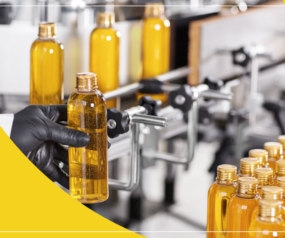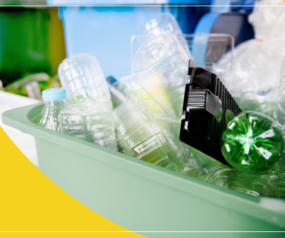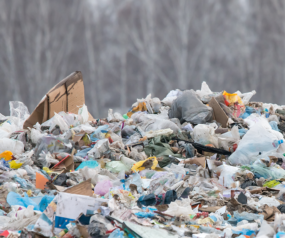Plastic During the Pandemic: Friend or Foe?
The pandemic had brought a lot of restrictions and protocols, including some which gave rise to plastic products. For one, front-line personnel are now required to use Personal Protective Equipment (PPE) as an added layer of protection. Plastic barriers are also seen in most establishments to limit physical contact.
And because of our need to say home, food deliveries have become ever so frequent. All these changes beg the question of whether or not plastic products are here to stay.
Plastic Use as A Consequence Of the Pandemic
Before this pandemic happened, many countries worked on reducing or eradicating plastic usage because of its undeniable threat to the environment. However, due to the perils of the Coronavirus, we are looking at an exponential increase in plastic-based products. The high demand for online shopping, takeaway foods, and PPEs has overturned other countries’ plastic bans.
According to USA Today, the dangers of the spread of the Coronavirus caused a temporary ban on reusable plastic bags. In San Fransisco, businesses do not allow their residents to bring their grocery bags or other reusable things from their own homes. This is to limit transfers of the virus among the population. On the contrary, some states like New York, Hawaii, Connecticut, California, Vermont, Oregon, Maine, and Delaware are still reconsidering the ban on single-use plastic bags.
Now, we are looking at high amounts of gloves, masks, hand sanitiser bottles, face shields, and PPE wastes in seabeds and drainages. While these products were meant to keep us safe, they are posing a lot of threats to the environment.
What Positive Result Do Plastic Products Offer?
Plastic materials have replaced paper, glass, cotton. Companies use them because of their convenience, lightweight properties, durability, and adaptability. Despite all those impressive properties, it will take up to 1000 years for plastics to decompose in landfills. This means that they will negatively impact both Earth’s land and water for an unforeseeable amount of time.
Some plastic materials also carry chemicals that can harm both humans and animals when consumed or exposed to. For example, BPA (bisphenol A) has been used to manufacture some polymers and resins. The substance was found to have a detrimental effect on the brain and prostate glands of babies and children exposed to it.
However, we should not discount the usefulness of plastic in this modern day. According to the article of Science History Institute, plastic materials are vital for manufacturing computers and other gadgets such as cell phones and play a critical role in advancing our modern medicine, undeniably a lifesaving factor credited to plastic materials. In addition, plastic products have elevated our living standards since they are more abundant in the market.
The article also cited the benefits of using plastic instead of scant natural materials found in the environment, like ivory from wild elephants. It is believed that the emergence of plastic materials has saved us from social and economic constraints due to the scarcity of natural resources.
Recycling Versus Single-Use Plastic
Through the years, we have been made aware of the adverse effects plastic has on the environment, human health, and the lives of other creatures. Humanity has since made significant efforts to reduce overall pollution, minimise flooding, and avoid public health hazards.
One of these is to follow the original three Rs of waste management, which is reuse, reduce, and recycle. This has recently expanded to eight Rs (Reduce, Refuse, Reuse, Re-Purpose, Repair, Recycle Right, Remove, And Rally).
However, individual efforts can only do so much. Problems like plastic should need solutions on a global scale.
Manufacturers have since come up with significant innovations to attack this problem. They have acknowledged that some plastics are simply difficult to recycle. There is also a significant cost difference between recycling plastic products and producing new ones. Recycling costs more than half the price of producing a new plastic product.
Therefore, some manufacturers have found new ways to contribute to saving the planet against the effects of plastic products. A lot of companies are employing new technologies to come up with plastic products with less carbon footprint and are fully recyclable.
Future in the Use of Plastic Products
With safety as our primary goal, the world is now using plastic more than ever. It has become more evident that plastic can either serve as humanity’s protector or the environment’s great polluter. Will we choose safety from the Covid-19 virus, or will we abandon all efforts to reduce the use of plastic for the sake of public health?
We cannot deny that plastic has negative environmental and health consequences. However, plastic materials are constantly evolving thanks to modern advancements. It is indeed impossible to avoid using plastic, but we can help by supporting businesses with a vision towards more sustainable plastic products.
Plastic product manufacturers are starting to experiment with less hazardous chemicals. They are also employing biodegradable and environmentally friendly chemicals and those that, when produced, will necessitate the use of less fossil fuel.
Several countries are now starting to use biodegradable plastic bags when shopping. This undertaking helps reduce greenhouse gas emissions, thereby marking a decrease in non-renewable energy consumption. This innovation was made true by using resources like cellulose, starch, sugar, and wood instead of utilising fossil fuel.
Global efforts like this will definitely make significant changes in the future. If we continue to support companies who are constantly innovating their products for a better future, plastic can be our ally in safety.






